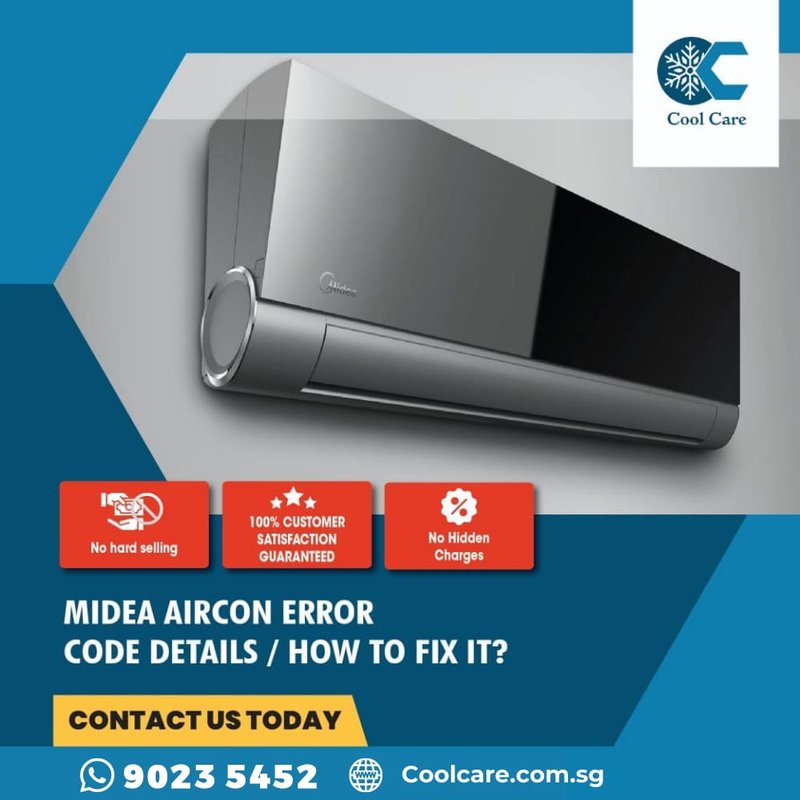
When a Midea air conditioner displays the F1 error code, it’s essentially sending out a distress signal. This code often points to a problem with the unit’s indoor ambient temperature sensor. Think of it as your air conditioner’s way of saying, “Hey, something’s not quite right here.” While it might be tempting to ignore the issue or hope it goes away on its own, addressing it promptly can prevent further damage and ensure your unit continues to run smoothly.
So, what exactly should you do when faced with the F1 error code? Let’s dive into why this code appears, what it means for your air conditioner’s health, and when it’s time to pick up the phone and call a technician.
Understanding the F1 Error Code on Midea Air Conditioners
First things first, let’s unravel what the F1 code actually signifies. In the world of Midea air conditioners, this code is typically linked to the indoor ambient temperature sensor. Imagine this sensor as the eyes and ears of your air conditioner. It monitors the room’s temperature and communicates with the system to adjust cooling levels for your comfort. When this sensor malfunctions or stops working properly, it can send the wrong signals to your air conditioning unit.
The F1 error tells you there’s a miscommunication happening. Your air conditioner might be cooling too little or too much—or not at all—because it doesn’t have the right information to work with. This is where things can start to go haywire. If ignored, it can lead to inefficient operation, higher energy bills, and, in worst cases, a complete system failure.
Understanding the implications of this error code can help you make informed decisions. While some errors are easy fixes you can handle at home, F1 typically requires a closer look by a professional to ensure the issue is properly diagnosed and resolved.
When to Attempt a DIY Fix
Here’s the deal: not all error codes mean you need to immediately call in the pros. There are a few things you can try at home before picking up the phone. But remember, safety first! Always turn off the power to your unit before attempting any troubleshooting.
A common initial step is to reset the air conditioner. Sometimes, a simple reset can clear the error. This is akin to rebooting your computer when it starts to act up. To do this, turn off your air conditioner, wait a few minutes, and then turn it back on. If the error persists, it’s a sign that a more technical issue may be at play.
Another potential DIY solution is checking for any visible obstructions around the unit or ensuring that the air filters are clean. Dirty filters can sometimes interfere with the sensor’s readings, leading to error codes. Cleaning or replacing them can occasionally do the trick. However, if after these steps the F1 error is still rearing its head, it might be time to consider calling in a technician.
Signals That It’s Time to Call a Technician
So, you’ve tried resetting the unit and checking the filters, and yet, that stubborn F1 error remains. You might be wondering, “What’s next?” Well, this is where professional intervention comes into play. A technician will not only have the knowledge to diagnose the problem accurately but also the tools to fix it effectively without causing further damage.
Typically, if the F1 code is persistent, the sensor might need replacing, or there could be a fault in the wiring or the control board. This isn’t something you should tackle unless you’re trained—it’s comparable to needing a surgeon for a broken bone. Attempting to fix it without proper expertise could void any warranties or lead to costly repairs down the line.
Moreover, technicians can perform a comprehensive check of your system, ensuring that everything else is in working order. This not only resolves the immediate issue but also prevents potential future breakdowns.
Preventing Future Error Codes
Preventative care for your air conditioner is akin to regular check-ups with your doctor. It keeps everything in top shape and helps avoid unexpected breakdowns. To keep error codes at bay, regular maintenance is key. This includes cleaning or replacing air filters every few months and ensuring the unit is free from dust and debris.
Scheduling regular check-ups with a professional technician can also make a big difference. These checks allow for early detection of issues, much like catching a small leak before it becomes a flood. During these visits, technicians can inspect and calibrate the sensors, check the wiring, and ensure the system is functioning efficiently.
Remembering to give your air conditioner a little TLC goes a long way in extending its lifespan and maintaining its performance. By staying proactive, you can enjoy the cool comforts of home without the drama of unexpected error codes.
In conclusion, while the F1 error code on your Midea air conditioner might seem daunting at first, understanding its implications and knowing when to call a technician can help you navigate the situation with confidence. With the right care and prompt attention to issues, you can ensure your air conditioner continues to be your trusted companion through every heatwave.